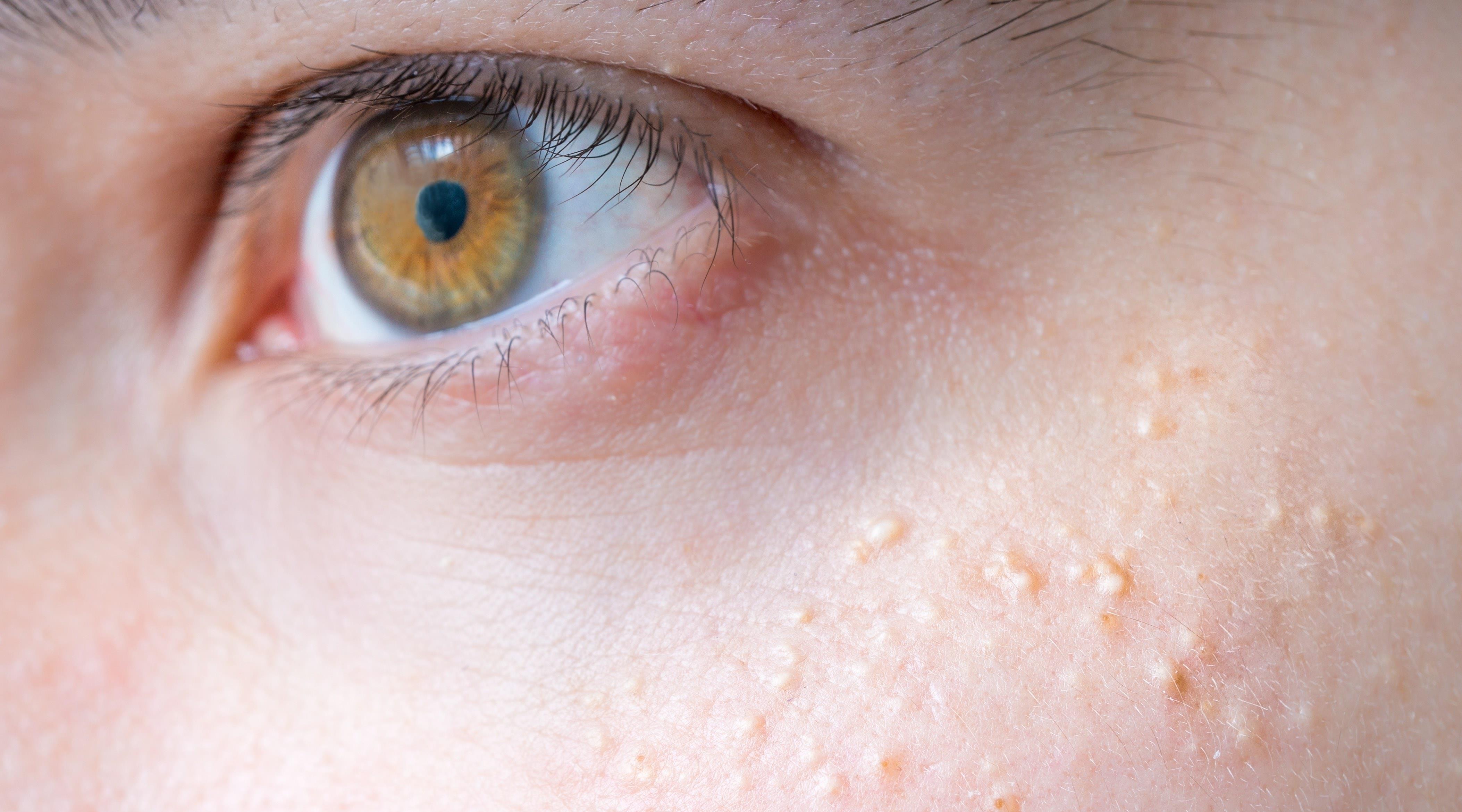What are milia?
"A milium is a small, pearly-white bump just under the surface of the skin. These harmless cysts are less than 3mm in diameter, and they usually come in multiples, in which case they are known as milia," explains Janice Brown, a freelance training consultant and electrolysis specialist.
What causes milia?
Milia are the result of very dry skin or when a client’s complexion is not being cared for correctly.
"Milia are common in all ages and genders and they form when keratin is trapped beneath the epidermis. While they can form on other anatomical areas such as the upper trunk, extremities and genital area, they are more commonly found on the face, and are particularly prominent in areas of fine skin, especially around the eyes and cheeks," says Brown.
How can you treat milia?
"Unfortunately milia can’t be removed by extraction like a blackhead or spot. Occasionally they will disappear on their own without intervention, but if they do need removing, it’s important clients come to you to get rid of them safely with a needle or laser," notes Donna Tait, co-founder of British skincare brand Katherine Daniels Cosmetics.
"Electrolysis, or more specifically thermolysis AC/RF/HF (alternating current, radiofrequency, high frequency), is an effective way to treat milia," says Brown.
"The thermolysis current is directed into the milia via a very fine, sterile probe (needle). The current generates heat energy which cauterises or coagulates the milia, causing it to dry and immediately shrink, and any remaining treated tissue is sloughed away over the following few days."
While milia removal with electrolysis is a hugely satisfying treatment to offer with fabulous client satisfaction, there are considerations to be made.
"Every piece of electrolysis equipment has different outputs, current levels, frequency and so on, so it is vital that the machine manufacturer or company trainers direct the practitioner to the most efficient and safe settings for that particular piece of equipment," explains Brown.
"Depending on the number of milia, generally one treatment is sufficient, occasionally two or three treatments may be necessary if milia are extensive."
When it comes to aftercare, Brown adds: "Immediately post treatment and for the first 48 hours, it is important for clients to use gentle products, ideally with soothing, healing and antibacterial properties. The treatment area should be kept clean, and it is important that the client does not touch or pick the area and uses gentle products, avoids heat and uses sun protection."
How can you prevent milia?
"A good skincare regime will help prevent the issue, so the sooner clients get into a routine the better," says Tait.
"The key ingredients they need to be using to help the skin function include red seaweed, blue micro algae extract and hyaluronic acid."
Tait also explains that she has seen cases of milia that have been caused by the client’s diet, where acid and alkaline have become unbalanced because the client has been consuming too much dairy or citrus.
"You need to explain the effect diet has on the skin and give clients nutritional advice to help reduce the problem," says Tait.
Read next: How gut health affects the skin: what beauty professionals need to know




square.jpg)